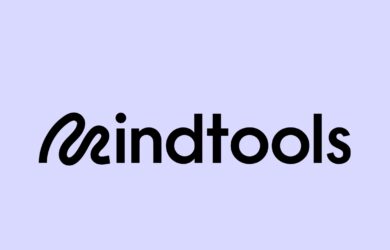 Balancing the macro and the micro is an everyday challenge for leaders. It’s certainly your job to keep your eye on the big picture. What’s going on in your markets? How are your competitors addressing customer needs? And closer to home, how does your balance sheet look?
Balancing the macro and the micro is an everyday challenge for leaders. It’s certainly your job to keep your eye on the big picture. What’s going on in your markets? How are your competitors addressing customer needs? And closer to home, how does your balance sheet look?
At the same time, you need to make sure that everything is ticking along nicely at a micro level. Do you have the right people in the right places? Is every link in the production chain working as well as it should? How is morale?
If you can get a detailed, objective view of your whole organization, seeing it from all angles, you’re more likely to make good decisions that will lead to high performance and growth.
Dan E. King has come up with a way of helping leaders do just that. It’s a tool called the Organizational Prowess Scorecard and it’s the focus of his new book, “The Scorecard Solution: Measure What Matters and Drive Sustainable Growth.”
“I felt that leaders needed a label,” he explains in our Expert Interview podcast. “If they could really comprehend what it means to drive accelerated growth in a business, they would know better where to make those investments. So I came up with the name ‘organizational prowess’ for that reason.”
He defines this term as “leveraging data and talent to execute a strategic imperative within compressed timeframes.”
He admits that’s “a bit of a mouthful,” but, when broken apart, it makes a lot of sense.
“Data is having good facts, so this is the essence of a scorecard, where you’re able to go into your business, collect information – very detailed information around capabilities – and then use that to address weakness,” he explains.
“Talent is about people getting things done. We all know that, in business, having the right people in the right roles and making sure they’re very focused on the strategic initiatives at hand is what helps drive success.
“That’s leveraging the data and the talent, so then comes execution. There are a lot of elements involved in how a business team will execute within a given business cycle. Then the strategic imperative really defines what it is that has to get done within a given business cycle.”
For King, the true competitive advantage is found in the last part of his definition: compressed timeframes.
“If a business and a management team can get done in less time what they’ve committed to, everybody wins, and from a financial perspective that’s what allows a business to exceed the plan, to exceed the goals. So if you’re able to hit your 12-month business objectives, for example, in 10 months, that’s profound. You not only overachieve in that given year, you’ve now created a run rate to overachieve in the following year, which really is the definition of sustainable growth.”
The scorecard outlined in his book is based on this definition of organizational prowess. It rates three aspects of an organization: strategy planning, execution framework, and talent.
In this audio clip, from our Expert Interview podcast, we hear some of King’s tips on the first of these: strategy planning.
Listen to the full 30-minute interview ¦ Install Flash Player.
The Organizational Prowess Scorecard will tell you if your organization is agile, resilient, vulnerable, or lagging, giving you a benchmark from which to improve. It’s a useful tool for leaders who want to shine a light into all the corners of their business, identify weakness, and try to counteract it.
Do you feel you have all the information you need to make the right decisions? Join the discussion below!




Comments
Mika says
10 years agoHe says, "We all know that, in business, having the right people in the right roles and making sure they’re very focused on the strategic initiatives at hand is what helps drive success."
Sometimes people will shift from one role to another - and maybe two or three times before they find the 'ideal' fit. If the person is the type of person you want in your organisation and they have a good attitude, be patient and help them find their niche. It is to your advantage! (My experience with it anyway...)
Enrique says
10 years agoAbout method to chosoe the right KPI I think you first have to describe your strategy. If I refer to Kaplan & Norton : The formulation of strategy is an art. The description of strategy, however, should not be an art. If we can describe strategy in a more disciplined way, we increase the likelihood of successful implementation. With a Balanced Scorecard that tells the story of the strategy, we now have a reliable foundation. The best way is to establish a strategy map that describe the connections between the different perspectives (patient, finance, internal processes, learning & growth) and that will allow us to reach our strategic goal and ultimately realize our mission. To be clear we have to start from our mission / vision statement and determine the strategic goals that will lead us to the accomplishment of our mission f.e. : better formation of the nurses for blood test ( learning and growth perspective ) will lead to more efficient care ( less time to make a blood test internal processes perspective ) and help us to save some money (nurses can make more blood test an hour, less syringes used financial perspective ) and better quality of care (less painful, faster care > more patient treated a day, patient perspective ) We don't have to forget that in the context of healthcare institution (and generally for all non-profit organization) the patient/customer perspective has to be elevated to the top of our Balanced Scorecard even if finance stays an important perspective. In the nonprofit and public sectors, financial measures ensure we're achieving our results in an efficient manner that minimizes cost. Allowing us to reinvest money more easily in leaning and growth (hire more physician and nurses) or internal processes (buy a new scanner).